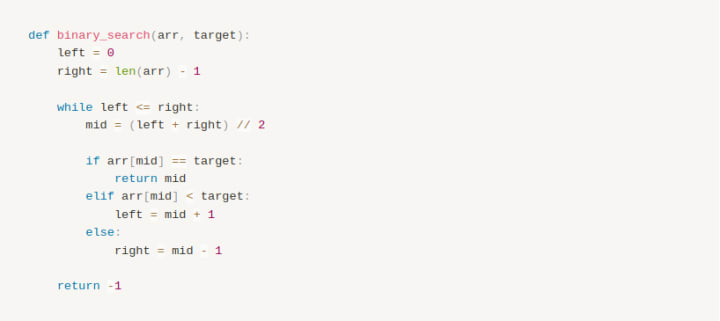Algorithms. Binary Search and Quick Sort. A Comprehensive Guide with Real-World Applications (Part 1)
Learn about two fundamental algorithms every programmer should know

If you're new to programming or algorithmic thinking, two key algorithms to learn are binary search and quick sort. These algorithms are widely used in computer science and have many real-world applications.
In this article, I'll provide a detailed guide to binary search and quick sort, including their implementations, use cases, and real-world applications. I’ll also provide examples and explanations to help you understand these algorithms and how they work.
So whether you're a beginner or an experienced programmer, read on to learn more about these powerful algorithms and how they can help you solve problems in your code and in the real world.
If you want to learn more about algorithms, you may want to read the book "Grokking Algorithms: An illustrated guide for programmers and other curious people" by Aditya Bhargava.

Binary Search
Binary search is a search algorithm that repeatedly divides the search interval in half, eliminating half of the remaining elements at each step. This approach results in a logarithmic time complexity of O(log n). Binary search is widely used in many applications, including searching databases, finding specific items in computer programs, and locating values in numerical data sets.
Implementation

Example
To find the index of 7 in [1, 2, 3, 4, 5, 6, 7, 8, 9], compare it to the middle element, 5. If it is greater than 5, search in the upper half [6, 7, 8, 9]. If it is less than 8, search in the lower half [1, 2, 3, 4, 5, 6]. Once you find 7, its index is 6.
Use Cases
- Searching for an element in a sorted list or finding the index of an element in a sorted list: Binary search can perform both tasks in O(log n) time complexity.
- Finding the element in a sorted list closest to a given value: Use binary search to find the element that is equal to the given value or just before or after it.
- Finding a peak element in an array sorted in ascending and then descending order: Use binary search to find the peak element, which is greater than its neighbors.
Real-World Applications
- Binary search efficiently searches through large databases, such as web pages and medical records, to return relevant results to users.
- The algorithm is used in computer networks to quickly locate a particular data packet in a sorted order of network data packets, and in financial trading to make informed decisions based on specific data in large datasets.
- Binary search is also used in machine learning to find optimal hyperparameters for a given model and in DNA sequencing to identify specific genes or mutations in large datasets.
Quick Sort
Quick Sort is a widely used sorting algorithm that efficiently sorts an array by recursively partitioning it into two sub-arrays. The algorithm selects a pivot element from the array and divides the remaining elements into two groups: those less than or equal to the pivot, and those greater than the pivot. It then recursively sorts the two groups until the entire array is sorted. Quick Sort is one of the fastest sorting algorithms due to its divide-and-conquer strategy, with an average time complexity of O(n log n). It can handle large data sets and is commonly used in various applications.
Implementation

Example
Suppose we have an array with the following elements: [9, 7, 5, 11, 12, 2, 14, 3, 10, 6].
To sort the array using the Quick Sort algorithm, follow these steps:
- Choose the first element in the array as the pivot element, in this case 9.
- Partition the array into two sub-arrays: one sub-array with elements less than or equal to the pivot, and the other sub-array with elements greater than the pivot.

3. Recursively apply steps 1 and 2 to each sub-array. First focus on the left sub-array:

4. Apply the same steps to the right sub-array:

5. Concatenate the sorted sub-arrays with the pivot element in between:

Use Cases
- Quick Sort is a classic divide-and-conquer algorithm used in computer science education and programming.
- Quick Sort is useful in applications where memory usage is a concern, such as embedded systems and real-time applications.
Real-World Applications
- Quick Sort is commonly used in databases and programming languages for sorting large data sets and data structures.
- Quick Sort is used in scientific computing and numerical analysis for sorting large data sets generated in simulations and experiments.
- Quick Sort is useful in e-commerce for quickly sorting products, reviews, and other data based on user preference. It is useful for online retailers with large catalogs.

Conclusion
Binary search and quick sort are two fundamental algorithms that every programmer should know. Binary search is a search algorithm that helps find specific items in computer programs, while quick sort is a sorting algorithm that can efficiently sort large datasets. Both algorithms have numerous real-world applications, from searching databases and financial trading to machine learning and DNA sequencing. In this article, I provide a detailed guide to both algorithms, including their implementations, use cases, and real-world applications. Whether you're a beginner or an experienced programmer, these powerful algorithms can help you solve problems in your code and in the real world. If you want to learn more about algorithms, you may want to read the book "Grokking Algorithms: An illustrated guide for programmers and other curious people" by Aditya Bhargava
In the next article, I will cover another popular algorithm: BFS (Breadth-First Search). This algorithm is used to explore all the vertices of a graph.
About the Creator
Alex Cadence
The point is to create. Start today.






Comments
There are no comments for this story
Be the first to respond and start the conversation.